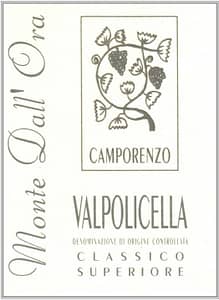Valpolicella was originally light to medium-bodied, refreshing, with a pleasing bitterness on the finish. Nothing to do with the dark, sweet, oaky or raisiny wines we have come to know. (Okay, amarone and ripasso have a rightful place in their context.) Monte Dall’Ora makes beautiful classical style wines.
The winery was founded by Carlo Venturini with his wife Alessandra in 1995. They bought some land in bad condition and started almost from scratch. They work the traditional varieties corvina, corvinone, rondinella, molinara, and also oseleta, an almost extinct grape that now is on the up.it was always organic, and in 2006 they converted to biodynamic agriculture.
They are found on the Castelrotto height, in San Giorgio, northwest from Verona. The soils are limestone with a reddish hue, quite special for this area, with a porous upper part. They train their vines in pergola. These varieties are vigourous and can easily grow to big bunches to control. Pergola gives air and space between the clusters, and you would also get smaller and concentrated bunches.
The actual wine is made up of 40% corvina, 30% corvinone and 20% rondinella, and a dash molinara. The vines for this traditional Valpolicella varieties were planted in 2008, trained on wires in guyot rather than in pergola for greater concentration. It’s harvested by hand in October, later than for the rest of their wines.
The grapes are destemmed and gently pressed. Spontaneous fermentation takes place with native yeasts and without sulfur in concrete and steel tanks, then maceration 7-8 days with occasional manual punch-downs. Aged 6 months in steel, then 6 months in old 25-hectoliter oak vessels bottled without filtration and only a small amount of sulphur.
Camporenzo Valpolicella Superiore 2017 (Monte Dall’Ora)
Ruby red, just a bit cloudy. Aroma of cherries, white flowers and, wild raspberry. On the palate more pungent than it appears by the eye; with red currant, pomegranate, berry seed, and stony minerals. Lots of pleasure in this bottle!
Price: Medium/low
Food: Light meat, liver, sage, prosciutto, pasta, boils, hard cheeses…
Leave a Comment





